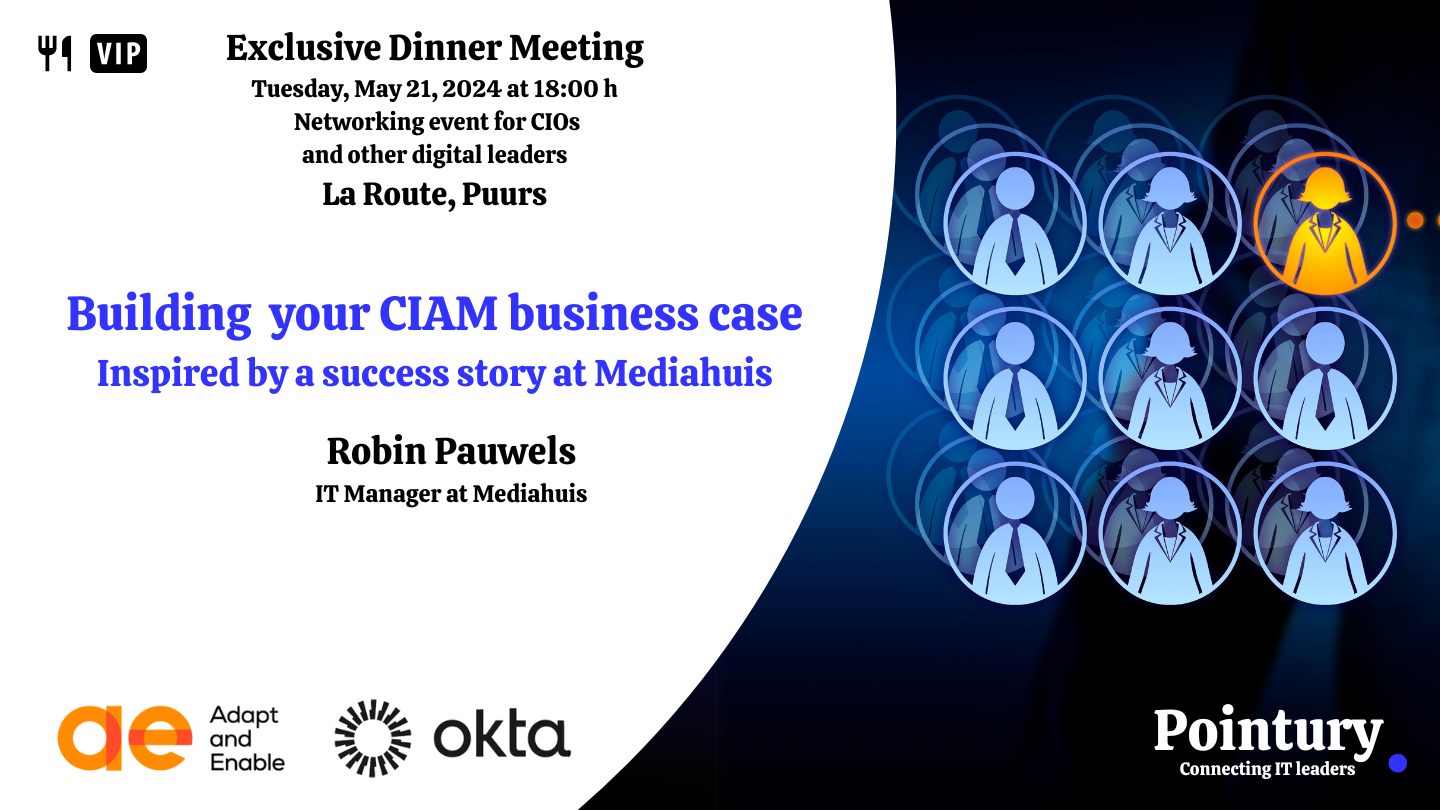CYBERSECURITY AT THE BOARDROOM
Luc Brouwers
5-dec-2024 23:00:00
 On Thursday, December 5, 2024, Pointury hosted yet another engaging event, spotlighting the importance of the involvement of the board with cyber defence The keynote speakers, Bart Van Nynatten, Marc Vael and Karl Dobbelaere initiated a lively discussion on this increasingly important topic.
On Thursday, December 5, 2024, Pointury hosted yet another engaging event, spotlighting the importance of the involvement of the board with cyber defence The keynote speakers, Bart Van Nynatten, Marc Vael and Karl Dobbelaere initiated a lively discussion on this increasingly important topic.

The Importance of Involving Boards of Directors and Executive Committees in Cybersecurity
- In today’s hyper-connected world, cybersecurity is no longer a technical issue confined to the IT department. It has become a critical business function that directly impacts an organisation’s reputation, financial health, and operational continuity. For this reason, boards of directors and executive committees must be actively involved in cybersecurity governance. The consequences of cyberattacks are severe, with financial losses, legal liabilities, and reputational damage that can last for years. Addressing this issue demands strategic oversight from leadership at the highest level.
Cybersecurity: A Board-Level Priority
Cyber threats are evolving in complexity and frequency. Cybercriminals target organisations across all sectors, exploiting vulnerabilities to steal sensitive information, disrupt operations, or demand ransom payments. While technical teams are tasked with defending against these threats, ultimate accountability for managing risks and ensuring resilience lies with the board of directors.
Boards play a pivotal role in establishing the tone at the top. By priositizing cybersecurity, they set a clear mandate for the rest of the organization. This involvement ensures that cybersecurity is not treated as an afterthought but as a fundamental aspect of the business strategy. Without board-level engagement, cybersecurity initiatives often suffer from inadequate funding, misaligned priorities, or lack of integration into the organisation’s broader risk management framework.
Aligning Cybersecurity with Business Goals
Executive committees, including CEOs and CFOs, must also be part of the cybersecurity conversation. Cybersecurity investments should align with business objectives, ensuring that resources are allocated to protect the most critical assets. For example, a retail company must prioritise the security of its customer data, while a manufacturing firm might focus on safeguarding its operational technology.
When cybersecurity is aligned with business goals, it is easier to justify investments to stakeholders. It also helps in demonstrating compliance with regulatory requirements, which increasingly hold organisations accountable for cybersecurity lapses. The European Union’s NIS2 directive, for instance, explicitly requires boards to be informed about cybersecurity risks and to oversee their mitigation. Failure to meet such obligations can result in hefty fines and reputational harm.
The Role of Leadership in Building a Cyber-Resilient Culture
Active board and executive involvement fosters a culture of cyber-resilience. This begins with education. Directors and executives must understand the threat landscape and the potential impact of cyber incidents on the organization. Regular briefings from cybersecurity experts, participation in tabletop exercises, and access to threat intelligence reports can equip leadership with the knowledge they need to make informed decisions.
Leadership must also champion organization-wide training and awareness programs. Employees at all levels are often the first line of defense against cyber threats. By promoting best practices, such as recognising phishing attempts and safeguarding passwords, leaders can empower their teams to reduce human vulnerabilities.
Bridging the Gap Between Technical and Business Leaders
A common challenge in cybersecurity governance is the disconnect between technical experts and business leaders. Boards and executives may struggle to understand the technical jargon used in cybersecurity reports, while security teams may find it difficult to communicate their concerns in business terms. Bridging this gap is essential for effective decision-making.
Boards and executive committees should encourage the appointment of a Chief Information Security Officer (CISO) or equivalent role that reports directly to them. This ensures that cybersecurity receives the attention it deserves at the strategic level. The CISO should act as a translator, presenting cybersecurity risks and metrics in a way that aligns with business language and priorities.
Preparing for the Inevitable
No organization is immune to cyberattacks. Involvement from boards and executive committees is crucial in ensuring that the organization is prepared for the worst-case scenario. This includes approving and periodically reviewing incident response plans, ensuring adequate cyber insurance coverage, and conducting post-incident reviews to learn from breaches and improve defences.
Organisations that take a proactive approach to cybersecurity are better positioned to mitigate the impact of attacks. They are also more likely to maintain the trust of customers, investors, and other stakeholders in the aftermath of an incident.
Conclusion
In the digital age, cybersecurity is a shared responsibility that extends beyond the IT department. Boards of directors and executive committees must take an active role in governing cybersecurity risks to safeguard their organisations against an ever-growing array of threats. By embedding cybersecurity into the corporate culture, aligning it with business goals, and preparing for inevitable incidents, leadership can ensure not only the survival but also the long-term success of their organisations.
Failure to act is no longer an option. Cybersecurity is not just a technical challenge—it is a strategic imperative.
The event was supported by leading cybersecurity companies:
- CrowdStrike, a global cybersecurity leader, has redefined modern security with the world’s most advanced cloud-native platform for protecting critical areas of enterprise risk — endpoints and cloud workloads, identity and data.
Powered by the CrowdStrike Security Cloud and world-class AI, the CrowdStrike Falcon® platform leverages real-time indicators of attack, threat intelligence, evolving adversary tradecraft and enriched telemetry from across the enterprise to deliver hyper-accurate detections, automated protection and remediation, elite threat hunting and prioritized observability of vulnerabilities.
Purpose-built in the cloud with a single lightweight-agent architecture, the Falcon platform delivers rapid and scalable deployment, superior protection and performance, reduced complexity and immediate time-to-value. - Netskope, a global cybersecurity leader, is redefining cloud, data, and network security to help organisations apply Zero Trust principles to protect data. The Netskope Intelligent Security Service Edge (SSE) platform is fast, easy to use, and secures people, devices, and data anywhere they go. Netskope helps customers reduce risk, accelerate performance, and get unrivalled visibility into any cloud, web, and private application activity. Thousands of customers, including more than 25 of the Fortune 100, trust Netskope to address evolving threats, new risks, technology shifts, organizational and network changes, and new regulatory requirements.


